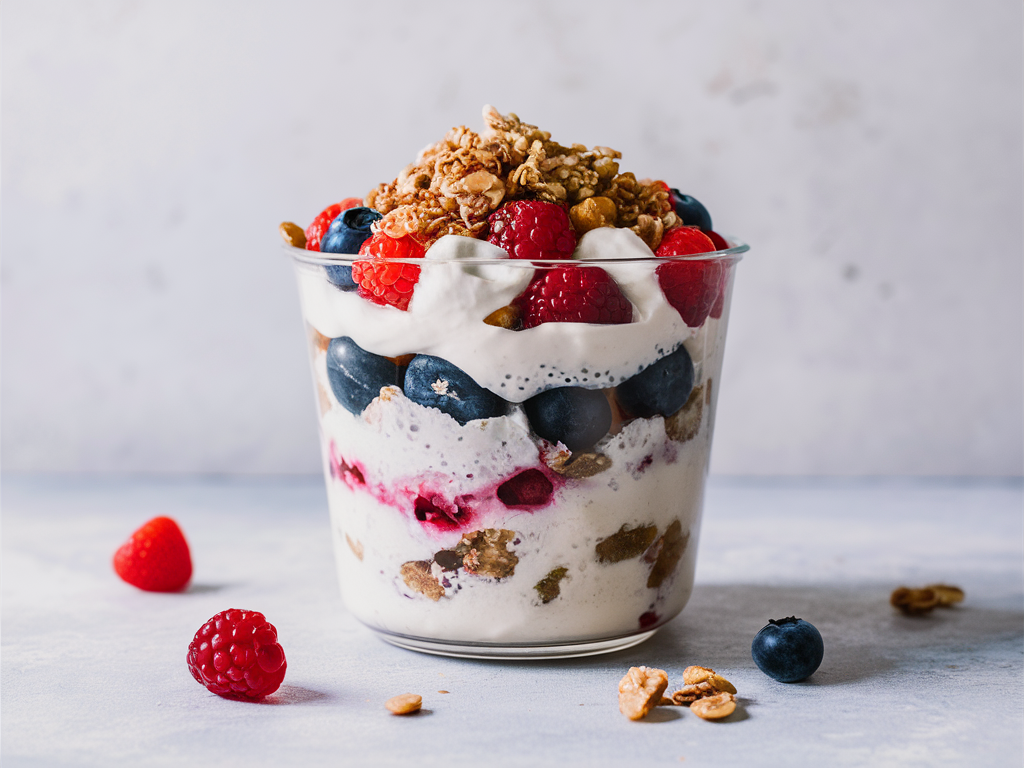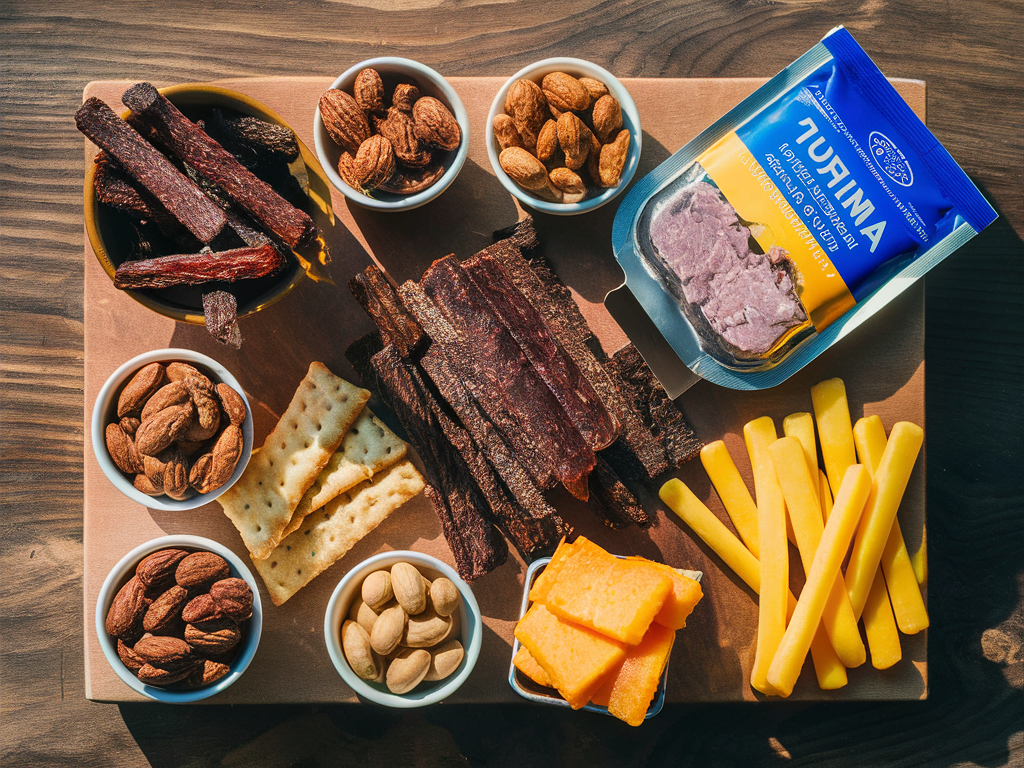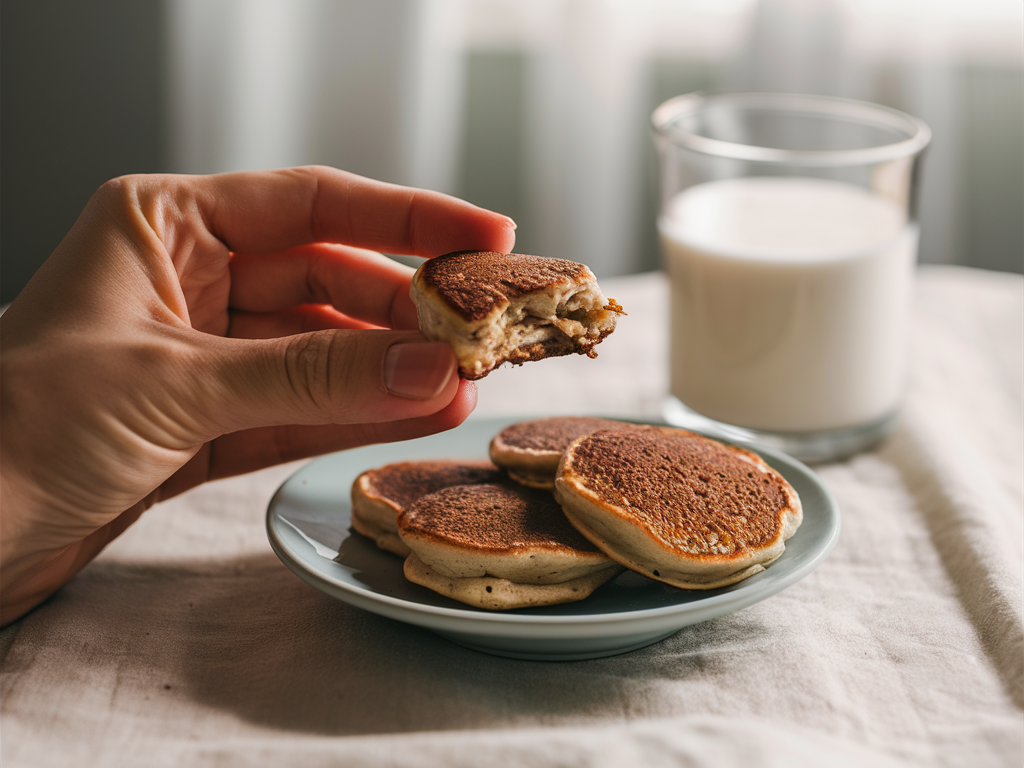Maintaining energy levels and satisfying hunger throughout a busy day can be challenging, especially when you’re constantly on the move. Protein-packed snacks offer the perfect solution, providing sustained energy while keeping hunger at bay. Whether you’re rushing between meetings, hitting the gym, or managing a hectic family schedule, having nutritious options at your fingertips is essential for optimal performance and wellbeing.
Protein serves as a fundamental building block for our bodies, supporting muscle repair, immune function, and enzyme production. As the most satiating macronutrient, protein helps control appetite and prevent blood sugar crashes that lead to energy slumps. For active individuals, adequate protein intake becomes even more crucial to support recovery and performance.
Including protein-rich snacks between meals offers numerous benefits beyond just curbing hunger. These nutrient-dense options help maintain stable blood sugar levels, prevent overeating at mealtimes, and provide essential amino acids that your body requires throughout the day. For those with fitness goals, strategic protein snacking can enhance muscle synthesis and improve workout recovery.
The beauty of high-protein snacking lies in its versatility—options abound for every dietary preference, from omnivores to vegans, making it accessible for anyone seeking to optimize their nutrition on a busy schedule.

Dairy-Based Protein Powerhouses
1. Greek Yogurt Parfaits with Nuts and Berries
With up to 20 grams of protein per cup, Greek yogurt forms an excellent snack foundation. Create portable parfaits by layering yogurt with antioxidant-rich berries and crunchy nuts in a travel container. For added convenience, pre-portion ingredients in separate compartments and assemble just before eating. This combination delivers protein alongside fiber, healthy fats, and essential micronutrients.
2. Portable Cheese Sticks and Mini Babybel
Individually wrapped cheese options like string cheese or Mini Babybel provide approximately 5-7 grams of complete protein per serving. These perfectly portioned dairy snacks require no refrigeration for several hours, making them ideal companions for day trips or office drawers. Pair with whole grain crackers or apple slices for a more substantial snack.
3. Cottage Cheese with Fruit Toppings
Low-fat cottage cheese packs an impressive 14 grams of protein per half-cup serving. Its mild flavor pairs beautifully with both sweet and savory toppings. For grab-and-go convenience, portion cottage cheese into small containers and top with pineapple chunks, peach slices, or berries. Alternatively, try savory versions with cherry tomatoes, cucumber, and a sprinkle of everything bagel seasoning.
4. Protein-Rich Milk Boxes
Shelf-stable milk boxes have evolved beyond elementary school lunchboxes. Today’s market offers ultra-filtered milk varieties containing up to 13 grams of protein per single-serve container. These ready-to-drink options require no refrigeration until opened and come in various flavors like chocolate, vanilla, and strawberry, satisfying both nutrition needs and taste preferences.
5. Whey Protein Smoothies in Travel Containers
For maximum protein concentration, whey protein smoothies deliver 20-30 grams per serving. Blend protein powder with milk or plant-based alternatives, add fruits for flavor and nutrients, then store in insulated travel containers. Some dedicated fitness enthusiasts prepare dry ingredients in advance and shake with liquid when ready to consume—a perfect solution for post-workout nutrition.
Nut and Seed Protein Options
6. Trail Mix Combinations with Nuts and Dried Fruits
Customize your protein intake with DIY trail mix blends. Combine protein-rich nuts like almonds (6g protein per 1/4 cup), pistachios, and walnuts with seeds and a light sprinkle of dried fruits or dark chocolate pieces. Portion into small resealable bags for controlled serving sizes that provide the perfect balance of protein, healthy fats, and carbohydrates for sustained energy.
7. Almond Butter Packets with Apple Slices
Single-serve nut butter packets have revolutionized on-the-go snacking, offering approximately 7 grams of protein per packet. These shelf-stable pouches pair perfectly with pre-sliced apples (now available with anti-browning treatment) or whole fruits. The protein-fat combination from the nut butter alongside the fiber and nutrients from fruit creates a satisfying snack that supports stable energy levels.
8. Roasted Edamame Packs
These crunchy soybeans provide an impressive 14 grams of complete plant protein per quarter-cup serving. Dry-roasted edamame comes in various flavors from sea salt to spicy wasabi, making them an excellent alternative to less nutritious crunchy snacks. Their portability and long shelf life make them perfect for stashing in desk drawers, gym bags, or car compartments for emergency protein boosts.
9. Pumpkin Seed Clusters
With 8-10 grams of protein per quarter cup, pumpkin seeds (pepitas) rank among the highest protein seeds available. Create clusters by lightly toasting seeds with honey or maple syrup and spices, forming nutrient-dense nuggets that travel well. These seeds provide not only protein but also zinc, magnesium, and iron—minerals often lacking in typical snack foods.
10. Chia Seed Pudding Cups
These tiny seeds pack 5 grams of protein per two tablespoons and create a delightful pudding-like texture when soaked in liquid. Prepare portable puddings by combining chia seeds with milk or plant-based alternatives and natural flavorings in small jars. After refrigeration, these grab-and-go treats provide protein alongside omega-3 fatty acids and fiber for digestive health.

Meat and Fish Protein Snacks
11. Beef or Turkey Jerky Sticks
Modern jerky products offer 7-13 grams of protein per ounce, making them one of the most protein-dense portable snacks available. Today’s market includes grass-fed beef options, lean turkey or chicken varieties, and even salmon jerky. Look for versions with minimal additives and lower sodium content for the healthiest option. Their long shelf life and no-refrigeration-needed convenience make jerky perfect for travel, hiking, or keeping in your desk.
12. Tuna Pouches with Crackers
Vacuum-sealed tuna pouches deliver approximately 15-20 grams of lean protein without requiring a can opener or draining. Available in various flavors from lemon pepper to herb and garlic, these convenient pouches pair perfectly with whole grain crackers for a complete mini-meal. Some brands even offer all-in-one kits with crackers and utensils included for maximum convenience.
13. Pre-cooked Chicken Strips
Fully-cooked, ready-to-eat chicken strips provide approximately 20-25 grams of protein per 3-ounce serving. Store these in insulated containers with ice packs for a few hours of safe transport. Modern packaging often includes resealable options for partial consumption. These protein powerhouses pair well with pre-cut vegetables or whole grain wraps for a more substantial snack option.
14. Mini Pepperoni Bites
Portion-controlled pepperoni packages offer 5-7 grams of protein per serving in a convenient, shelf-stable format. These savory morsels can be enjoyed alone or paired with string cheese and grape tomatoes for a deconstructed pizza experience. While higher in fat than some options, their zero-carb profile makes them suitable for those following ketogenic or low-carb eating plans.
15. Smoked Salmon Pinwheels
Offering 15-20 grams of protein per 3-ounce serving, smoked salmon provides high-quality protein along with omega-3 fatty acids. Create pinwheels by spreading cream cheese on a tortilla, add smoked salmon, cucumber, and capers, then roll and slice. These can be prepared ahead and stored in an insulated container for a sophisticated high-protein snack option.
Plant-Based Protein Snacks
16. Roasted Chickpea Snack Packs
With 6-8 grams of protein per quarter-cup serving, roasted chickpeas provide plant-based protein with a satisfying crunch. Commercial varieties come in flavors ranging from ranch to buffalo spice, or make your own by tossing chickpeas with olive oil and seasonings before roasting until crispy. These fiber-rich legumes support digestive health while providing sustained energy through their combination of protein and complex carbohydrates.
17. Lentil Chips with Hummus
Lentil-based chips typically contain 4-5 grams of protein per ounce—significantly more than potato or corn varieties. Pair these crunchy snacks with single-serve hummus containers (offering an additional 3-4 grams of protein) for a plant-powered protein combination. This duo provides complementary amino acids for a more complete protein profile while delivering fiber and micronutrients.
18. Tofu Nuggets
Baked or air-fried tofu nuggets contain approximately 8-10 grams of protein per 3-ounce serving. Prepare these by marinating extra-firm tofu in soy sauce or other seasonings, then baking until golden and crispy. These plant-based nuggets maintain their texture at room temperature for several hours, making them practical for packed lunches or post-workout refueling.
19. Seitan or Tempeh Strips
Seitan (wheat gluten) provides an impressive 21 grams of protein per 3-ounce serving, while tempeh (fermented soybeans) offers about 16 grams for the same amount. Slice either into strips, season and cook, then refrigerate for grab-and-go options throughout the week. These dense protein sources satisfy hunger effectively and work well in wraps or alongside pre-cut vegetables.
20. Bean-Based Protein Bars
Innovative protein bars made from legumes like chickpeas, lentils, or black beans typically provide 10-15 grams of plant protein per bar. These often contain fewer processed ingredients than traditional protein bars while delivering fiber alongside protein. Their convenient packaging makes them ideal for stashing in bags, vehicles, or desk drawers for protein emergencies.
Protein-Enhanced Convenience Foods
21. Protein Cookies and Brownies
Modern protein-enhanced baked goods offer 8-15 grams of protein per serving—significantly more than their traditional counterparts. Made with whey, collagen, or plant proteins, these treats satisfy sweet cravings while contributing to daily protein goals. While not as nutrient-dense as whole food options, they provide a practical compromise between convenience, taste preference, and nutritional benefit.
22. Egg White Bites
Inspired by popular coffee shop offerings, homemade or store-bought egg white bites deliver 12-17 grams of high-quality protein per serving. These can be prepared in muffin tins with various mix-ins like spinach, bell peppers, and feta cheese, then refrigerated for grab-and-go options throughout the week. They maintain quality when reheated or can be enjoyed cold for maximum convenience.
23. Protein Pancake Bites
Protein-enhanced pancake mixes transformed into mini muffin-style bites contain approximately 5-7 grams of protein per two-bite serving. Prepare a batch using protein pancake mix, pour into mini muffin tins, then bake until set. These portable pancake alternatives can be frozen and thawed as needed, offering a convenient breakfast-inspired protein snack without the mess of traditional pancakes.

24. High-Protein Rice Cakes with Toppings
While plain rice cakes offer minimal protein, they serve as excellent vehicles for protein-rich toppings. Spread with cottage cheese (14g protein per half-cup), tuna salad (15g protein per quarter-cup), or nut butters (7g protein per 2 tablespoons) to create customizable high-protein snacks. The crisp base provides satisfying crunch while allowing for flavor variety throughout the week.
25. Protein-Infused Granola Clusters
Protein-enhanced granola typically contains 8-12 grams of protein per half-cup serving—about double the protein content of traditional varieties. These crunchy clusters combine oats, nuts, seeds, and protein powder for a satisfying texture that travels well. Portion into small containers or bags for controlled serving sizes that prevent mindless overeating of this energy-dense option.
Best Practices for Protein Snacking
Ideal Protein Amounts per Snack
Nutritionists generally recommend snacks containing 10-15 grams of protein for optimal satiety and muscle maintenance. This amount provides enough amino acids to stimulate protein synthesis without overloading your digestive system between meals. Consider your overall daily protein needs—typically 0.8-1 gram per pound of bodyweight for active individuals—and distribute this amount throughout your daily meals and snacks for maximum utilization.
Balancing Macronutrients for Optimal Energy
While protein offers satiety, combining it with appropriate amounts of healthy fats and complex carbohydrates creates the most balanced energy source. Aim for snacks that incorporate multiple macronutrients—for example, Greek yogurt (protein) with berries (carbs) and nuts (fats). This approach helps maintain blood sugar stability and provides a more sustained energy release than protein-only options.
Storage and Portability Tips
Invest in quality storage solutions to maintain food safety and freshness. Small ice packs and insulated containers keep perishable protein sources like dairy and meat at safe temperatures for several hours. For shelf-stable options, consider portion-controlled containers that prevent crushing or spilling. Silicone reusable bags offer an environmentally friendly alternative to disposable plastic for transporting snacks to work, school, or fitness activities.
Meal Prep Ideas for Weekly Snack Preparation
Dedicate 1-2 hours weekly to prepare grab-and-go protein snacks. Create assembly lines for preparing multiple portions of protein boxes containing cheese, hard-boiled eggs, nuts, and fruit. Cook and portion proteins like chicken strips or tofu nuggets into individual containers. Pre-portion smoothie ingredients into freezer bags for quick blending. This advance preparation removes decision fatigue and ensures healthy choices remain the most convenient options when hunger strikes.
Conclusion
Incorporating high-protein snacks into your daily routine represents one of the simplest yet most effective strategies for maintaining energy, supporting metabolism, and preventing hunger-driven poor food choices. The 25 options outlined above offer something for every dietary preference, taste profile, and lifestyle requirement.
Don’t hesitate to experiment with different protein sources to discover your personal favorites. Consider rotating through several categories to ensure nutrient diversity and prevent taste fatigue. Remember that consistency with balanced nutrition typically yields better results than periodic perfection—finding protein-rich options you genuinely enjoy increases the likelihood of maintaining healthful habits long-term.
As you navigate busy days, let these convenient high-protein snacks serve as reliable energy sources that fuel your activities while nourishing your body. With minimal preparation and thoughtful selection, you can transform potential energy slumps into productive periods powered by balanced nutrition—proving that health-conscious choices can indeed coexist with fast-paced modern lifestyles.

